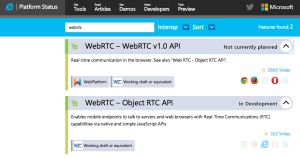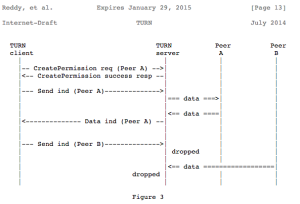As WebRTC has matured to a state where it’s first implementations are ready for companies to launch real services around it, the readiness of various companies to adopt WebRTC has fanned out quite a bit. Some are already charging ahead as early adopters, while others are playing it conservative. Of those in the conservative camp, one of the […]
coTURN: the open-source multi-tenant TURN/STUN server you were looking for
Last year we interviewed Oleg Moskalenko and presented the rfc5766-turn-server project, which is a free open source and extremely popular implementation of TURN and STURN server. A few months later we even discovered Amazon is using this project to power its Mayday service. Since then, a number of features beyond the original RFC 5766 have been […]
Looks-matter – the new webrtcHacks design
I threw together the original webrtcHacks design in several hours without really knowing what I was doing, not sure if it would really matter anyway. 13 months later we have 49 posts and 14-15,000 unique visitors a month. My work with WebRTC has also given me a much greater appreciation for modern web design and […]
Building Consensus on WebRTC – Q&A with W3C Editor Dan Burnett
I’m at the IIT RTC Conference this week in Chicago which is an excellent, no-BS conference that featured many WebRTC luminaries and one of best events I have attended in a long time. On Tuesday I moderated a panel with WebRTC contributors and ORTC promoters, Robin Raymond of Hookflash, Bernard Aboba of Microsoft, and Peter […]
Project WONDER: showing WebRTC NNI does not need SIP
As discussed in previous posts, WebRTC standards do not specify a signaling protocol. In general this decision is positive by giving developers the freedom to select (or invent) the protocol that best suits the particular WebRTC application’s needs. This can also reduce the time to market since standards compliance-related tasks are minimized. WebRTC media and […]





